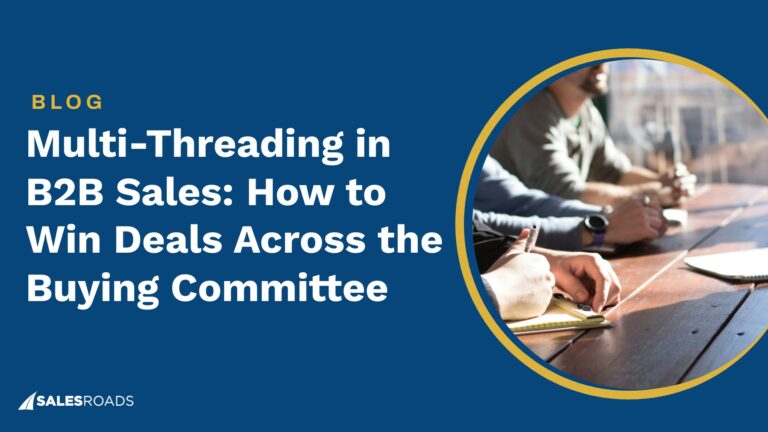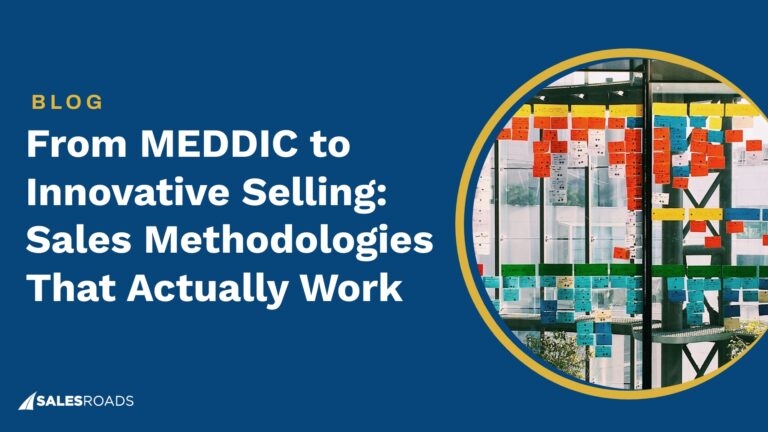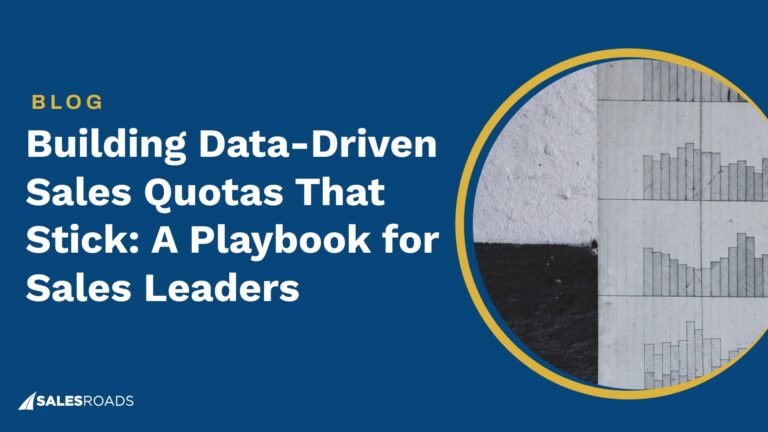Building long-lasting relationships is more critical than ever today. It’s no longer enough to close deals and move on—true success lies in keeping your customers engaged, satisfied, and loyal.
A well-executed customer loyalty and retention strategy can be the difference between thriving in a competitive market and constantly struggling to replace lost clients.
But how do you create that kind of loyalty? How do you turn one-time customers into lifelong partners?
What Customer Loyalty Means and Why It Matters?
Customer loyalty refers to a customer’s commitment to repeatedly purchase from a company over time. This loyalty often stems from positive experiences with a product, satisfaction with customer service, and the perceived value of the offerings.
Today, customer loyalty is paramount as it can lead to increased profitability and lower costs. Companies that prioritize creating customer loyalty can foster long-term relationships, improve brand reputation, and gain a competitive edge.
Ultimately, a strong focus on loyalty programs can translate into sustained growth and resilience in fluctuating markets.
Types of Customer Loyalty
Understanding the various types of customer loyalty is crucial for crafting an effective customer loyalty and retention strategy.
- Transactional Loyalty: This is the most basic form of loyalty, where customers repeatedly buy from a company primarily due to favorable pricing, convenience, or product availability. While transactional loyalty can lead to short-term sales, it is often less robust and may not guarantee long-term retention.
- Emotional Loyalty: This type of loyalty goes beyond transactions and involves customers forming a genuine emotional connection with a brand. Emotional loyalty often results from exceptional customer experiences, brand storytelling, and alignment of values. Customers with emotional loyalty are more likely to advocate for the brand and remain loyal even in the face of competitive offers.
- Behavioral Loyalty: This loyalty is based on customers’ purchasing habits, which can be influenced by loyalty programs and customer retention initiatives. For instance, businesses that implement loyalty programs can incentivize customers to return and reward them for their repeat purchases, enhancing their overall experience.
- Advocacy Loyalty: The highest form of customer loyalty occurs when customers actively promote a brand to others. These advocates are crucial for organic growth, as they help build trust and credibility. Encouraging advocacy loyalty involves engaging customers through social proof, referrals, and community-building efforts.
Understanding these types of loyalty can help businesses tailor their loyalty programs and customer retention efforts effectively, ensuring they meet the needs and expectations of their target audience.
Metrics to Measure Customer Loyalty
Measuring customer loyalty is essential for assessing the effectiveness of loyalty retention strategies and making informed business decisions.
Several key metrics can help organizations gauge customer loyalty:
- Net Promoter Score: NPS is a widely used metric that measures customer satisfaction and loyalty by asking customers how likely they are to recommend the company to others. A high NPS indicates strong customer loyalty, while a low score may highlight areas needing improvement.
- Customer Lifetime Value: CLV estimates the total revenue a business can expect from a customer over the entire duration of their relationship. A higher CLV suggests that customers are returning for repeat business, demonstrating effective customer retention and loyalty strategies.
- Customer Satisfaction Score: CSAT measures customer satisfaction based on feedback collected through surveys or direct interactions. A high CSAT score suggests that customers are happy with their experiences, which is a positive indicator of retention and loyalty.
By monitoring these metrics, businesses can gain valuable insights into their customer loyalty and retention strategies, identify areas for improvement, and adapt their approach to foster stronger customer relationships.
Customer Retention and How It Differs from Loyalty
Customer retention and loyalty are often used interchangeably, but they represent different concepts in the realm of business.
Customer retention focuses on the ability of a company to keep its customers over time, emphasizing strategies that encourage repeat business. It involves various tactics aimed at minimizing churn and maximizing the duration of the customer relationship.
In contrast, customer loyalty encompasses the emotional and psychological connection a customer has with a brand, which often drives their decision to continue purchasing despite competitive offerings.
While effective customer retention strategies can foster loyalty, loyalty itself goes deeper, reflecting a customer’s genuine affinity for the brand. Understanding this distinction is crucial for businesses aiming to develop a robust customer loyalty and retention strategy that addresses both aspects effectively.
Cost of Acquisition vs. Retention
When formulating a customer loyalty and retention strategy, it’s essential to recognize the differences between the costs associated with acquiring new customers versus retaining existing ones.
Customer acquisition costs (CAC) include expenses related to marketing, sales efforts, and promotions aimed at attracting new clients. According to research, acquiring new customers can be five to twenty-five times more expensive than retaining existing ones.
This highlights the importance of investing in loyalty programs and customer retention initiatives, as they often yield a higher return on investment.
In contrast, customer retention costs are typically lower and more predictable. Retention strategies may include loyalty programs, customer service enhancements, and personalized communications, all designed to foster stronger relationships with existing clients.
Businesses focusing on creating customer loyalty and retention can benefit from reduced marketing expenses and a more stable revenue stream. Furthermore, loyal customers often contribute to organic growth by providing referrals and positive word-of-mouth, further decreasing the reliance on expensive acquisition strategies.
Ultimately, prioritizing customer retention not only reduces costs but also enhances the overall customer experience, leading to increased loyalty and long-term business success.
Retention Metrics
To effectively measure the success of your customer retention and loyalty strategies, it’s crucial to track specific retention metrics.
These metrics provide valuable insights into how well your organization is retaining customers and where improvements can be made.
- Customer Retention Rate: This key metric indicates the percentage of customers that a business retains over a specified period. A high CRR reflects effective loyalty retention efforts, while a low rate may signal underlying issues that need to be addressed.
- Repeat Purchase Rate: This metric measures the frequency with which existing customers make additional purchases. By tracking the repeat purchase rate, businesses can assess the effectiveness of their loyalty programs and customer retention strategies. A higher rate signifies successful initiatives that encourage customers to return.
- Churn Rate: Churn rate calculates the percentage of customers who discontinue their relationship with a company over a given timeframe. A high churn rate can be indicative of customer dissatisfaction and may require immediate action to improve retention strategies.
How to Develop a Customer Loyalty Program?
Creating an effective customer loyalty program is essential for fostering long-term relationships and enhancing customer loyalty and retention.
Here’s a step-by-step approach to developing a program that resonates with your audience:
Define Objectives
Start by outlining the specific goals of your loyalty program. Are you aiming to increase repeat purchases, boost customer engagement, or improve customer satisfaction? Clear objectives will help you design a focused program that aligns with your overall business strategy.
Understand Your Customers
Conduct thorough market research to understand your customers’ preferences, behaviors, and pain points. Segment your audience based on demographics, buying patterns, and interests to tailor your loyalty program effectively. This understanding will inform the types of rewards and incentives that will appeal to your customers.
Choose the Right Structure
Decide on the type of loyalty program that best fits your business model. Common structures include point-based systems, tiered programs, or membership clubs. Point-based systems reward customers with points for each purchase, which can be redeemed for discounts or exclusive offers. Tiered programs incentivize customers to reach higher levels of loyalty with increasing rewards.
Incorporate Meaningful Rewards
Select rewards that are valuable to your customers and encourage continued engagement. Consider offering discounts, exclusive access to new products, early invitations to events, or personalized experiences. The key is to ensure that the rewards align with your customers’ preferences and foster a sense of exclusivity.
Leverage Technology
Utilize technology to streamline your loyalty program and enhance customer experiences. Implement a user-friendly platform where customers can easily track their points, access rewards, and receive personalized offers. Mobile apps and online portals can significantly improve customer engagement and participation.
Promote Your Program
Once your loyalty program is ready, promote it across all customer touchpoints. Use email campaigns, social media, and your website to create awareness and encourage enrollment. Highlight the benefits of joining the program and how it contributes to customer loyalty and retention.
Monitor and Adapt
Continuously track the performance of your loyalty program through metrics like enrollment rates, redemption rates, and customer feedback. Regularly analyze the data to identify areas for improvement and adjust the program accordingly. Adapting to changing customer needs and preferences is crucial for maintaining the effectiveness of your loyalty initiative.
By following these steps, businesses can create a successful loyalty program that not only enhances customer loyalty and retention but also drives overall business growth.
Strategies to Enhance Customer Retention
Enhancing customer retention is vital for businesses looking to create lasting relationships and maximize revenue. Here are several effective strategies to bolster customer retention:
Provide Exceptional Customer Service
High-quality customer service is a cornerstone of customer retention. Train your team to be responsive, knowledgeable, and empathetic. Addressing customer concerns promptly and effectively can turn a potentially negative experience into a positive one, fostering loyalty.
Personalize Customer Interactions
Tailoring communications and offerings to individual customers can significantly enhance their experience. Use customer data to personalize emails, product recommendations, and marketing messages. When customers feel valued and understood, they are more likely to remain loyal.
Implement a Feedback Loop
Actively seek customer feedback through surveys, reviews, and direct communication. Understanding customer experiences, preferences, and pain points enables you to make necessary improvements. Showcasing that you value their opinions can strengthen the customer relationship.
Develop a Customer Community
Building a sense of community among your customers can enhance their connection to your brand. Consider creating forums, social media groups, or events where customers can engage with one another and share their experiences. This sense of belonging can drive loyalty and retention.
Offer Loyalty Programs and Incentives
Loyalty programs are effective tools for customer retention. Develop initiatives that reward repeat purchases, referrals, or engagement with your brand. Incentives can motivate customers to choose your brand over competitors and reinforce their commitment to your business.
Stay Engaged Post-Purchase
The relationship with customers shouldn’t end after the sale. Use follow-up emails, newsletters, and personalized offers to stay connected. Regular engagement keeps your brand top-of-mind and demonstrates your commitment to customer satisfaction.
Provide Educational Content
Offering valuable content that educates your customers can enhance their experience and loyalty. Create blog posts, webinars, or how-to guides that help customers make the most of your products. Providing ongoing value fosters trust and encourages customers to remain with your brand.
Monitor Key Metrics
Regularly assess customer retention metrics to gauge the effectiveness of your strategies. Track customer retention rates, repeat purchase rates, and customer satisfaction scores to identify trends and areas for improvement. Continuous monitoring enables businesses to make informed decisions to enhance retention efforts.
By implementing these strategies, businesses can significantly enhance customer retention and loyalty, leading to long-term success and sustained growth.
Technology’s Role in Loyalty and Retention
Technology plays a pivotal role in enhancing customer loyalty and retention. By leveraging advanced tools and platforms, businesses can streamline their loyalty programs, personalize customer experiences, and foster long-term relationships.
Here’s how technology contributes to customer loyalty and retention strategies:
Data Collection and Customer Insights
Technology enables businesses to collect and analyze vast amounts of customer data, providing invaluable insights into customer behavior, preferences, and purchasing patterns. With this data, companies can tailor their loyalty programs and customer retention strategies to meet the specific needs of their audience.
For example, customer relationship management (CRM) systems can track interactions, purchases, and feedback, allowing businesses to segment their customers and deliver personalized incentives that drive loyalty retention.
Automation and Efficiency
Sales and marketing automation tools allow businesses to streamline communication and ensure consistent engagement with customers. Automated email campaigns, follow-ups, and personalized offers can be triggered by customer actions, such as purchases or website visits.
This ensures that customers receive timely and relevant communications that reinforce their loyalty to the brand. Additionally, automation reduces manual efforts, allowing businesses to focus on more strategic aspects of customer retention and loyalty programs.
Personalization and Customer Experience
Personalization is a key driver of customer retention and loyalty. Advanced technologies like AI and machine learning can analyze customer data to deliver personalized recommendations, offers, and communications.
For instance, AI-powered chatbots can provide tailored assistance, while machine learning algorithms can suggest products based on past purchases or browsing history. When customers feel that their unique needs are understood and addressed, they are more likely to remain loyal to the brand.
Mobile Loyalty Programs
With the rise of mobile devices, businesses can now offer mobile-friendly loyalty programs that are easily accessible to customers on the go. Mobile apps allow customers to track rewards, redeem points, and receive exclusive offers directly from their smartphones. This convenience enhances the customer experience and increases participation in loyalty programs.
Mobile loyalty solutions also enable push notifications, keeping customers informed about new offers, promotions, and program updates, which can drive higher retention rates.
Customer Feedback and Engagement
Technology facilitates real-time feedback collection, allowing businesses to understand customer satisfaction levels and address concerns promptly. Tools like online surveys, social media platforms, and review management systems enable companies to gather and analyze customer feedback.
Responding to this feedback in a timely manner not only improves customer satisfaction but also builds trust, which is crucial for long-term loyalty retention.
Predictive Analytics for Retention
Predictive analytics can help businesses identify at-risk customers and take proactive steps to retain them.
By analyzing past behaviors and trends, predictive models can forecast which customers are likely to churn. With this knowledge, businesses can implement targeted retention strategies, such as personalized discounts, outreach campaigns, or loyalty programs, to re-engage these customers before they leave.
Bottom Line
Customer loyalty and retention don’t happen by accident—they require a well-thought-out strategy, continuous engagement, and a personalized approach.
In today’s competitive landscape, the businesses that thrive are those that invest in building meaningful, long-term relationships with their customers.










